Therapy dog
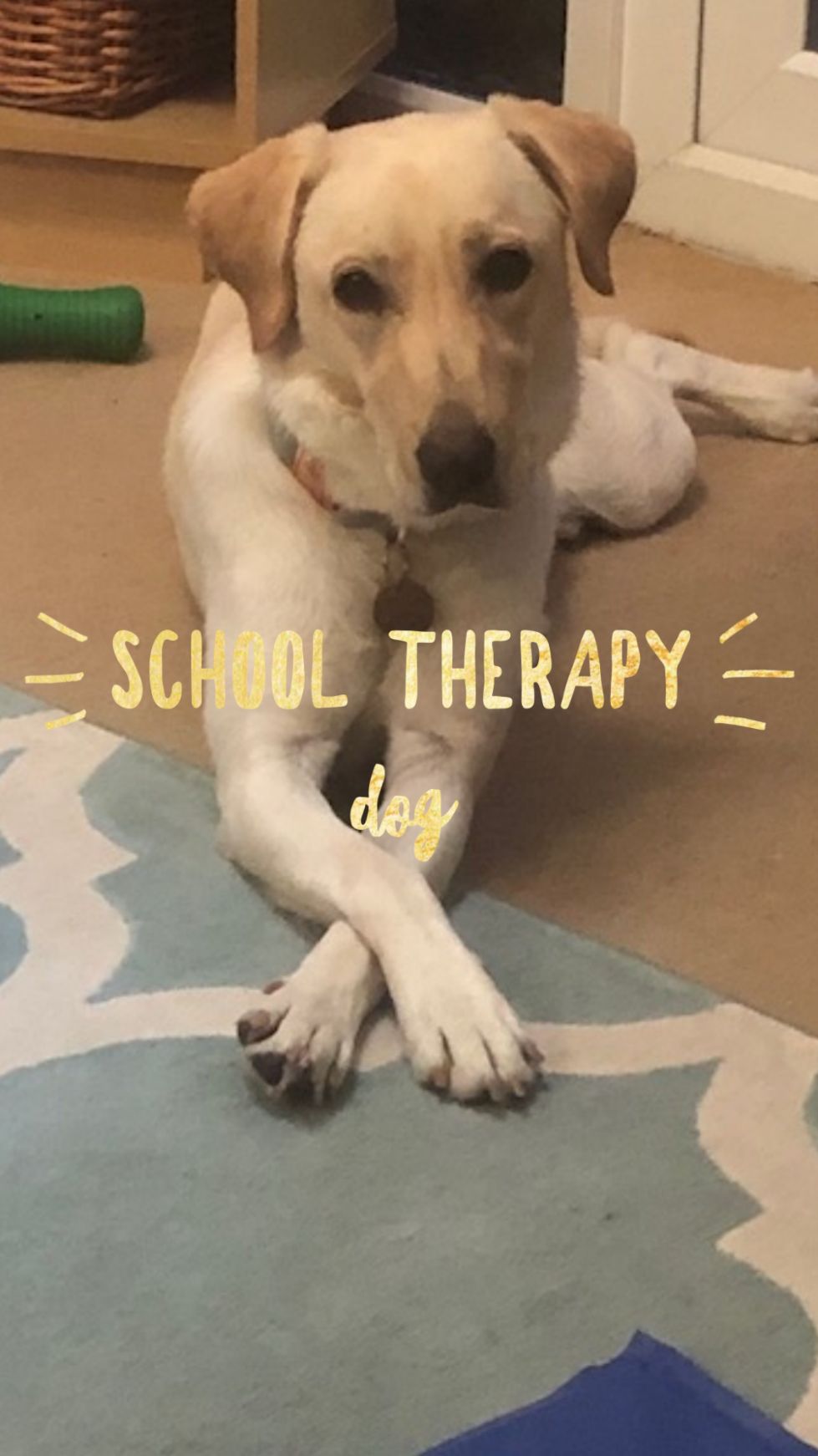
Research has shown many benefits to therapy and reading dogs in school settings. Rushey Mead Primary School has introduced the use of a therapy dog into the emotional well-being provision at school. This policy is designed to set out to pupils, parents, staff and visitors the reasons for having a school dog and the rules and responsibilities to ensure the safety of pupils, staff, visitors and the school dog. Although there is a risk in bringing a dog into a school environment, this can be mitigated against with a robust risk assessment to ensure the safety of all pupils, parents, staff and visitors. (Appendix A - Risk Assessment).
Children can benefit educationally and emotionally, increase their understanding of responsibility and develop empathy and nurturing skills through contact with a dog. In addition to these benefits, children take great enjoyment from interactions with a dog.
The latest guidance from the government regarding pets and animals in school are below.
Chapter 8: pets and animal contact - GOV.UK - Updated March 2021
Government guidance
Pets and other animals in school can enhance the learning environment. However, contact with animals can pose a risk of infection including gastro-intestinal infection, fungal infections and parasites. Some people, such as pregnant women and those with a weakened immune system, are at greater risk of developing a severe infection. However, sensible measures can be taken to reduce the risk of infection to the children and to staff. Only mature and toilet trained pets should be considered and the Headteacher should ensure that a knowledgeable person is responsible for the animal. There should be a written agreement within the school detailing:
- the types of animals allowed in the school
- how to manage them and permitted behaviour whilst on the premises
- where they can go and where they cannot go when in the school
- any insurance liability of owners and handlers
Animals should always be supervised when in contact with the children and those handling animals advised to wash their hands immediately afterwards. Animals should have recommended treatments and immunisations, be regularly groomed (including claws trimmed) and checked for signs of infection. Bedding should be laundered regularly. Feeding areas should be kept clean and their food stored away from human food. Food not consumed in 20 minutes should be taken away or covered to prevent attracting pests.
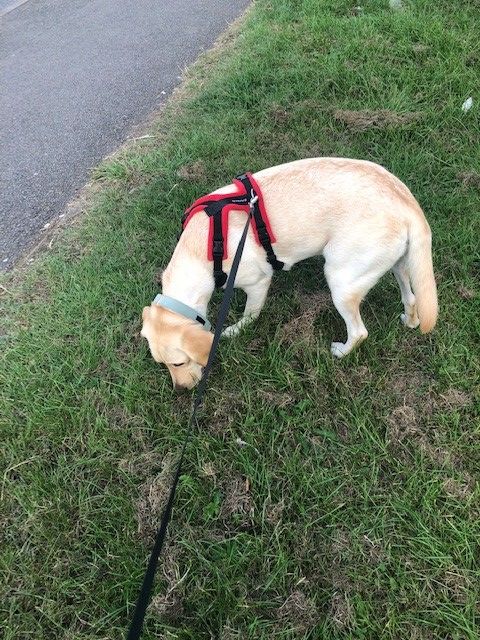

The benefits of a school dog
School dogs have been proven to help develop Pupils’ reading skills, improve behaviour, attendance and academic confidence, as well as increasing student understanding of responsibility and in the development of empathy and nurturing skills. At Rushey Mead Primary School, we hope that a school dog will be a beneficial addition to our therapeutic offer, in addition to the interventions we already offer and promoting engagement for those children who have found it difficult to access talking therapies in the past.
Animal assisted interventions (also known as AAI’s) can:
- Teach empathy and appropriate interpersonal skills;
- Help individuals develop social skills;
- Be soothing;
- Improve a child’s ability to pick up on social cues which are imperative to human relationships;
- Therapy dogs have been shown to support emotional regulation through the positive impact on the autonomic nervous system
- Show that children working with therapy dogs have experienced increased improved motivation for learning, resulting in improved outcomes;
- Therapy dogs are being used to support children with their social and emotional learning needs, which can also aid literacy development.
Research into the effects of therapy dogs in schools is showing a range of benefits including:
- Increase in school attendance;
- Improved confidence;
- Decreased pupil anxiety resulting in improvements in learning, such as increases in reading and writing levels;
- Improved motivation to learn;
- Enhanced relationships with peers and teachers due to experiencing trust and unconditional positive interactions with a therapy dog;
- Helping children learn how to express their feelings and enter into more trusting relationships.
- Increase social skills and self-esteem
- Teach responsibility and respect to all life
Confidence benefits
“If children are partnered with a dog to read to, for example, the dog provides comfort, encourages positive social behaviour, enhances self-esteem, motivates speech and inspires children to have fun and enjoy the non-judgemental experience”
Bark & Read – The Kennel club
SEND benefits
“Therapy Dogs Nationwide dogs have also shown to help with special needs and autistic children and adults by giving focus and providing a calming environment.”
Therapy Dogs Nationwide
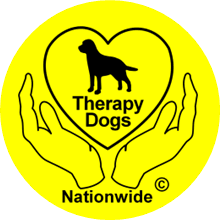

Mental Health and Wellbeing benefits
Some mental health challenges and psychiatric disorders are known to respond well to therapy dogs. Patients diagnosed with a range of issues, such as depression, bi-polar disorder, Autism, ADHD, post-traumatic stress disorder (PTSD), and Alzheimer's disease, benefit from their interaction with therapy dogs and other companion animals.
Sometimes, emotional challenges are the result of physical health problems, and therapy dogs can help with those too. Research suggests that patients who are recovering from difficult surgery or a bad accident who participate in animal-assisted therapy may feel less pain. Studies have shown that such interactions can increase the mood-boosting hormone oxytocin and decrease the stress hormone cortisol.
Evidence shows that just by being near a dog when stressed can reduce anxiety. In a survey, 92% of Pupils said they felt more relaxed during teaching and learning time when there was a dog in the classroom. When children are more relaxed and less stressed, they’re going to learn more.
Behaviour benefits
Researchers report that Pupils can identify with animals, and with empathy for the dog, can better understand how classmates may feel. It was found that violent behaviour in participating Pupils declined by 55%, and general aggression went down 62%. In a controlled study, Pupils were found to have fewer disciplinary referrals in schools with a dog than schools without. Pupils’ behaviour improved toward teachers, and Pupils also showed more confidence and responsibility.
The following information has been taken from a range of sources to provide further detail about the benefits of having a dog in school:
Education
Reading programmes with dogs are doing wonders for some pupils. Children who might be embarrassed to read aloud to the class or even adults are likely to be less scared to read to a dog. “It might be less stressful for a child to read aloud to a dog than to a teacher or a peer. After all, a dog won’t judge or correct you. Dogs are used to encourage struggling readers to practise reading aloud. With the presence of a calm and well-trained dog, pupils find social support and peer interaction. Dogs are incredibly calm and happy to have pupils read to them or join a group of children in the library whilst they are having a book reading session. Dogs give unconditional acceptance, as they are non-judgmental, which is especially crucial to struggling, emerging readers. The dogs also provide confidence to children as they do not make fun of them when they read, but above all they make amazing listeners, providing the children with a sense of comfort and love. Research has proved that pupils who read to dogs show an increase in reading levels, word recognition, a higher desire to read and write, and an increase in intrapersonal and interpersonal skills among the pupils they mix with.
Social Development
Dogs in school offer an opportunity for improving social development. They are especially useful for teaching pupils social skills and responsibility. Schools are using dogs to help older pupils build self-esteem; learn about positive and negative reinforcement, responsibility, and boundaries. Pupils can use dogs to help communicate, teach kindness, and empower Pupils. With a dog in school, pupils have the opportunity to learn how to care for the dog. This includes walking and grooming. Research reports that involving pupils in the daily care of a classroom dog is a positive experience, promoting their own daily care. The pupils also learn about responsibility, caring, and sharing when helping each other take care of a dog at school.
Pastoral Care
Therapy Dogs can work with pupils on a one-one basis and will especially help those pupils who have been bullied, abused, going through upsetting/difficult times or even scared/phobic of dogs. The dog will bring much joy and help to all the pupils they meet and are happy to provide plenty of hugs to the pupils they are spending time with. Pupils who struggle with social interaction can find a reassuring friend in a dog.
What do the children think?
“I want a Guide Dog when I am big. I can shake Harper’s paw and make her sit.”
“It’s really calming having time with Harper.”
“I like it when Harper lies on my feet when I read to her.”
“I was very nervous to start with when I met Harper, but she’s cute and now I am quite attached to her. When can I come and visit her next?”
“I liked it in Hanging with Harper club when we sat on the sofa and played catch with her teddy bear.”
“I like how when I broke my arm, Harper stuck with me and protected me at break and on our walks to keep me safe.”
“Harper’s a really cute dog and I think she’s really nice for the school. If new children start they can come and play with her which is a really fun thing to do.”
Harper's Gallery


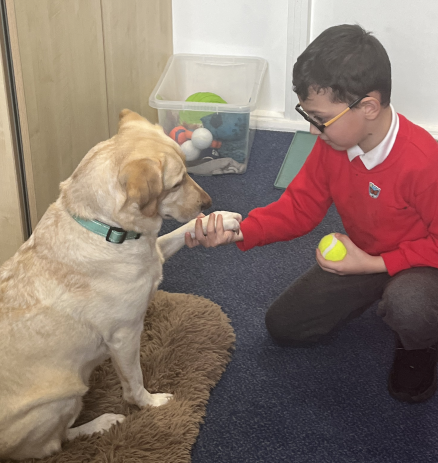

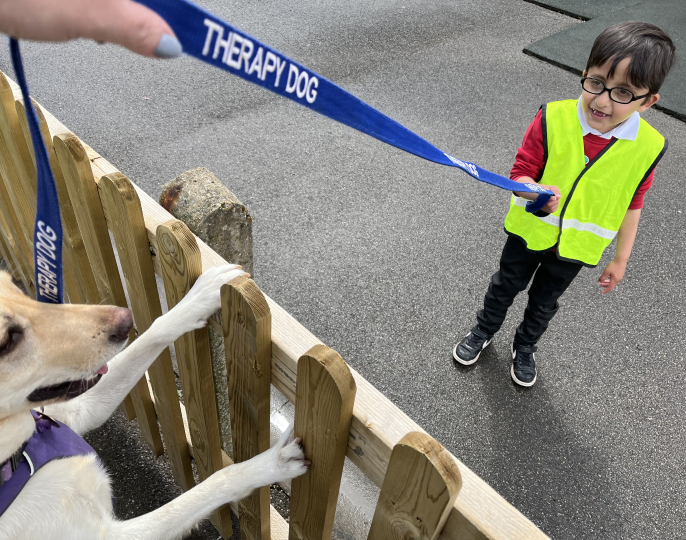
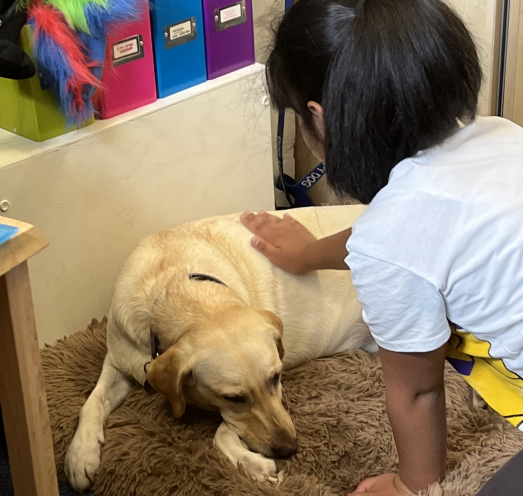
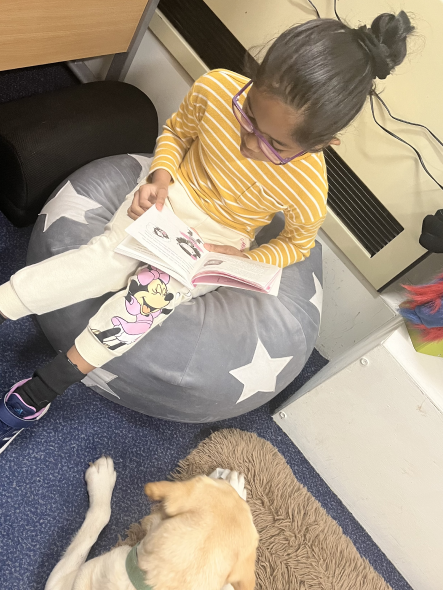


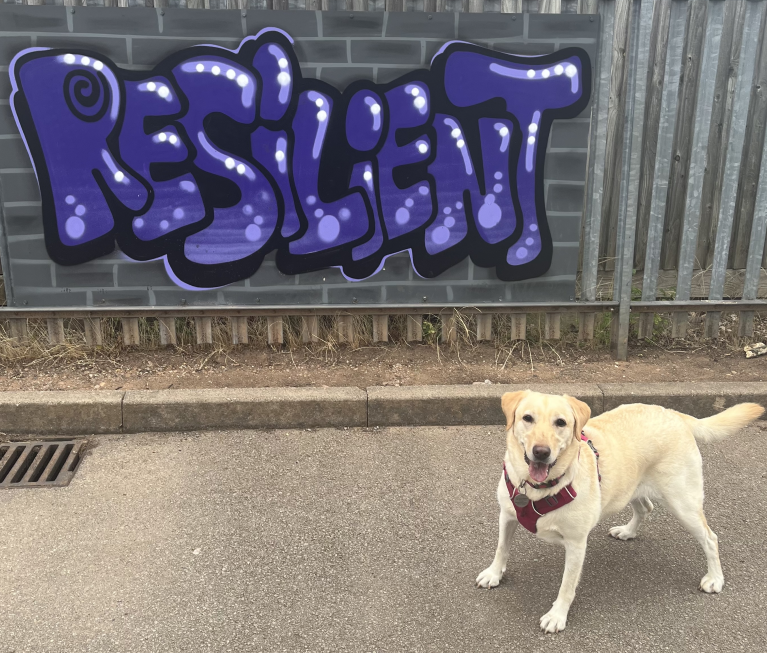



Harper had her school photo taken
